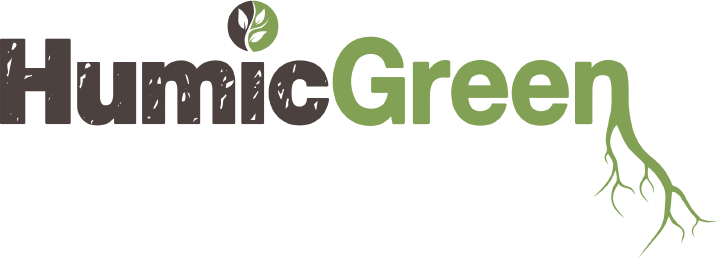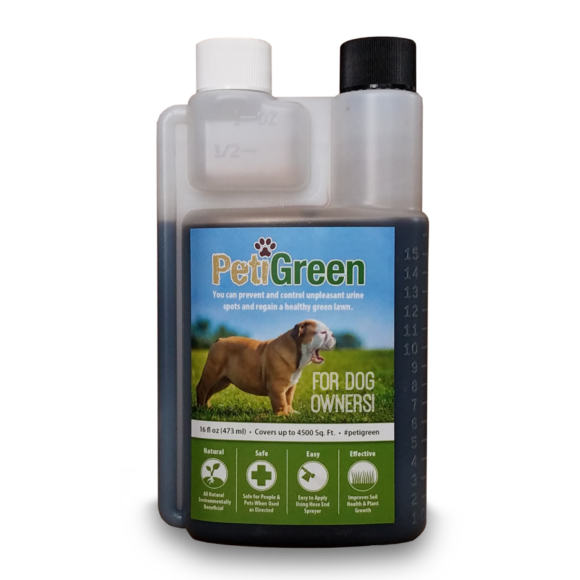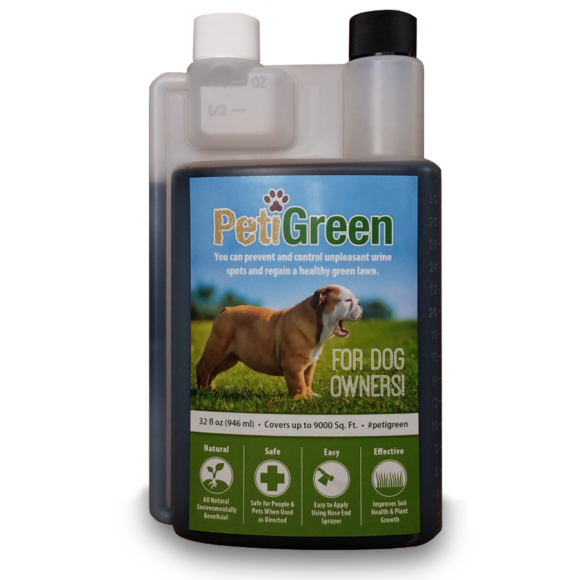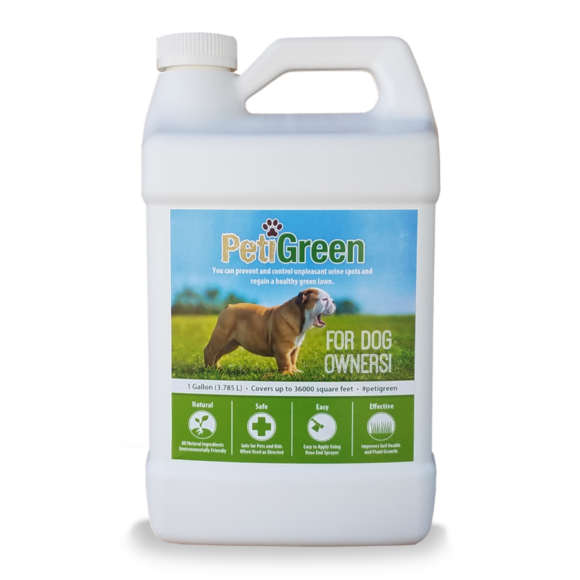
To understand how PetiGreen’s unique formula works in combating urine damage, it is important to take a look at the underlying causes of how the damage occurs.
People often want to know how to neutralize dog urine. Generally it is not the pH of the urine that is the problem. Though pH might vary, it generally won’t vary enough to kill your grass. The primary offender that damages grass from dog urine is something we’ve all heard of called urea. Dog urine contains urea, CO(NH2)2, which is an end product of protein metabolism. A whopping 46% of urea is nitrogen. Urea is often called ammoniacal nitrogen because it contains ammonia NH. It is why dog pee has the odor of ammonia.
Grass is known as an opportunistic feeder. That means if food is available in a form that it can consume it will consume it. Urea is in a form that grass can consume and it will try to consume all that becomes available. When dogs urinate on grass it is the high amount of urea that causes the damage. The rapid uptake of nitrogen causes an imbalance in something called osmotic pressure in the grass roots. We often equate this to stuffing our mouths so full of donuts that we can’t drink anything. In the same way roots become so full of nitrogen that they can’t take in any water. The grass literally dies from dehydration even when an abundance of water is available.
The secondary offender that damages to grass from dog urine is salt. Salt, in the form of sodium chloride NaCl, allows water to permeate through the cell walls in the roots of plants. When there is too much salt a cell will take in so much water that the wall of the cell burst. All of the water is released from the cell and the cell is destroyed. When enough cells burst the root is incapable of functioning and the plant dies from dehydration and starvation.
Do I need to stop fertilizing my lawn?
This raises the question; do I need to stop fertilizing my lawn? Since an excess of nitrogen is what is killing your grass, adding more nitrogen to it will make the problem worse. Until you get the urine spots under control we recommend that you stop fertilizing your lawn in the areas where your dogs have access. When using the PetiGreen program your lawn may occasionally need some fertilizer, especially in areas of the country that receive quite a bit of rain. If you do need some fertilizer, you can cut the amount you would usually use in half or more. We recommend applying it only if needed. If your dog makes the rounds all over your lawn you might not need to fertilize at all.



 As we mentioned before, people often want to know how to neutralize dog urine. Instead of thinking about ways to neutralize dog urine, it might be better to think in terms of neutralizing the damaging effects of dog urine. One of the functions of beneficial soil microbes is to assimilate and metabolize nitrogen.
As we mentioned before, people often want to know how to neutralize dog urine. Instead of thinking about ways to neutralize dog urine, it might be better to think in terms of neutralizing the damaging effects of dog urine. One of the functions of beneficial soil microbes is to assimilate and metabolize nitrogen.




